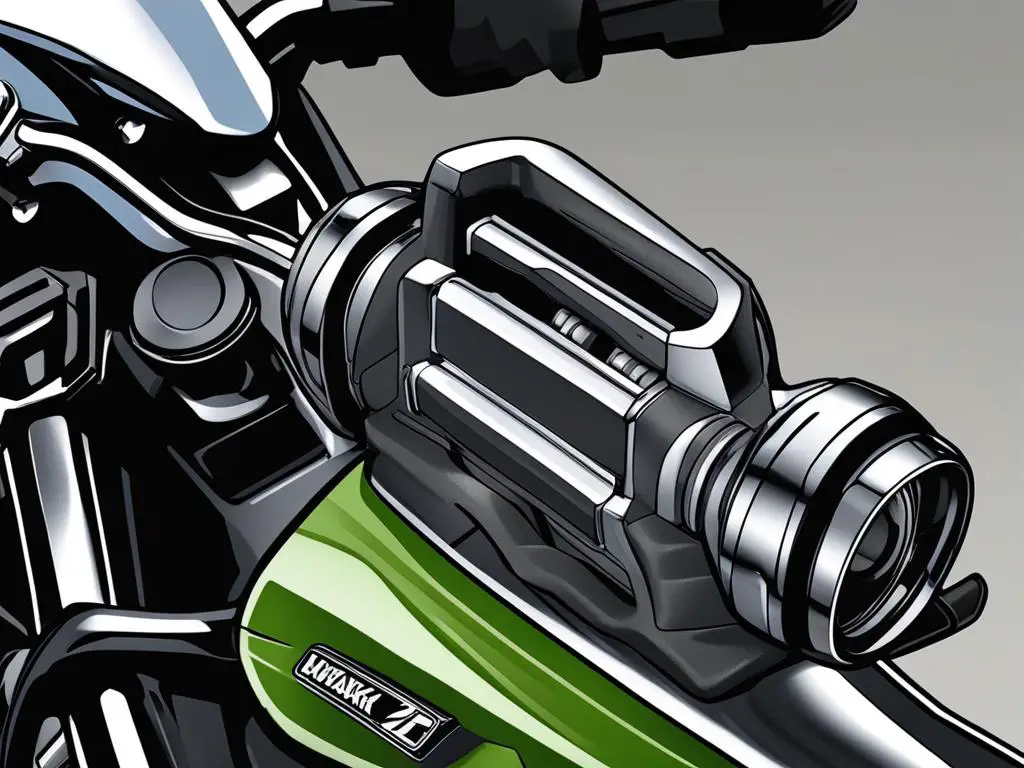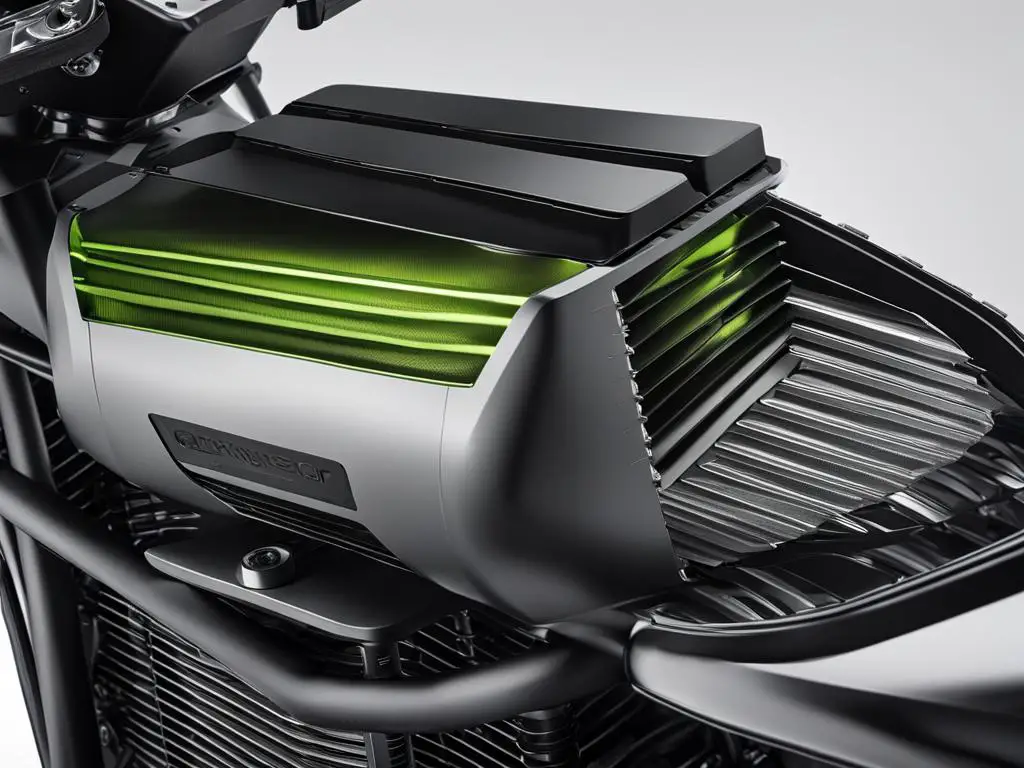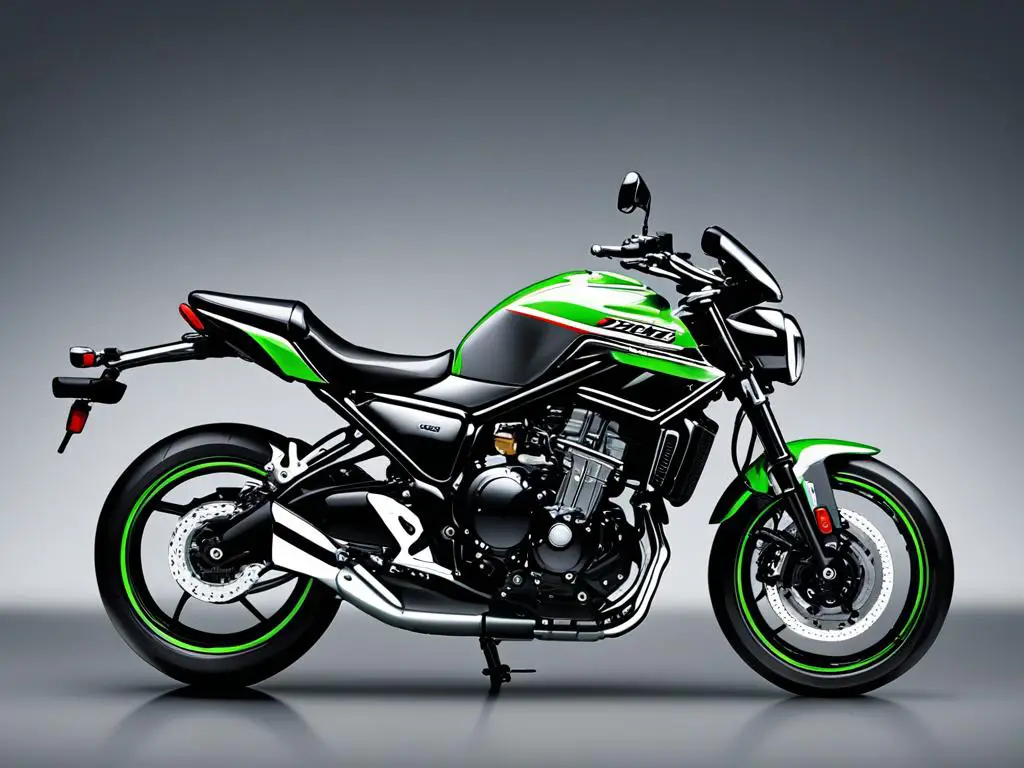Renowned for merging the nostalgia of yesteryears with today’s robust technology, the Kawasaki Z900RS stands as a symbol of motorcycle reliability and design sophistication. This street-ripping modern-classic is equipped with a powerful 948cc inline-four engine ready to conquer racetrack glory and winding roads. It’s the embodiment of a true love affair between timeless appeal and modern performance.
Yet, even with its impeccable lineage, the Z900RS is not exempt from challenges. As admirers and riders seek the thrill of the road, a few have navigated through some Kawasaki Z900RS problems intrinsic to the rigors of riding. From transmission tribulations to the occasional heat hiccup, these motorcycles have laid a real-world test to the problem-solving skills and ingenuity of both Kawasaki and the dedicated owners alike.
As guardians of such a classic marque, riders are tasked with the responsibility of maintaining their noble steeds. This article serves as an informed guide, providing insights into common issues and practical solutions to ensure your ride remains as smooth and reliable as the day it rolled off the showroom floor.
Key Takeaways
- Understanding common issues can enhance motorcycle reliability and longevity.
- Identifying the symptoms of transmission problems early can help prevent long-term damage.
- Regular maintenance checks are crucial for optimal engine and heat management.
- Seat discomfort can be addressed with aftermarket solutions, tailoring to individual preferences.
- Knowing the nuances of your motorcycle’s idling RPM and fuel requirements can prevent unnecessary mechanical issues.
- Staying updated on recalls ensures the safety and proper functioning of your motorcycle.
Transmission Quirks and Quick Fixes
The Kawasaki Z900RS, a testament to modern-classic innovation, is not without its share of transmission problems. A critical aspect of the riding experience, efficient gear shifting is key to the Z900RS’s performance. Recognizing the signs of gear change issues can help riders address these concerns before they exacerbate.

Feedback from the riding community suggests that most transmission hiccups, such as a clunky feel during gear changes—particularly noticeable from neutral to first—is often a simple fix rather than a grave concern. Let’s explore some of the adaptive measures embraced by the Z900RS enthusiasts to offset these sporadic challenges.
| Issue Identified | Potential Culprit | Quick Fixes |
|---|---|---|
| Clunky Downshift | Oil Grade/Pressure on Gearbox | Upgrade oil; Reposition parked bike to alleviate gearbox pressure. |
| Difficulty Engaging First Gear | High Idle/Improper Parking | Adjust idle; Reposition bike; Ensure proper rev-matching during downshifts. |
| Loud Bang and Jerk | Maintenance Lapse | Follow scheduled maintenance; Inspect clutch cable adjustment. |
Some riders have found that altering the oil to a more premium grade mitigates the gear change issues. This is particularly effective for those who experienced overly harsh downshifts. Additionally, a rider’s parking habits can incidentally place undue stress on the transmission. Simply rolling the Z900RS forward or backward before engaging the gear can be the silver bullet for refusal to comply when shifting into first.
Another valuable tip involves rev-matching; skillfully synchronizing the engine’s RPM to the gear you’re aiming for can transform a clunky transition into a seamless gear change experience. It’s a technique that rewards with smoothness and longevity of the motorcycle’s transmission system.
It’s clear that while the Kawasaki Z900RS has faced its share of transmission problems, many of them stem from nuances that require a rider’s attentive care or slight adjustments. With these insights, loyalists of the Z900RS can continue to enjoy every twist and turn on their beloved rides with confidence and control.
Heat Management: Staying Cool Under Pressure
Ensuring your Kawasaki Z900RS operates within optimal temperature ranges is critical to maintaining both performance and longevity. Be vigilant for overheating signs which can creep up even when conditions seem normal. The key to effective Z900RS heat management is a combination of diligent monitoring and routine maintenance.

Spotting Signs of Overheating
One of the most direct indicators of a potential overheating issue is the temperature gauge on your Z900RS. Climbing readings can hint at the need for immediate action. Other symptoms may include a loss of engine power, unusual smells, or steam emerging from the engine area.
Preventative Measures and Maintenance Tips
Regularly performing an engine oil check and maintaining the proper coolant level maintenance are fundamental tasks for any Z900RS rider. It’s essential to ensure that not only are fluids at the correct levels but also that they are of high quality and replaced according to your bike’s maintenance schedule. Fuses should also be checked to ensure the cooling system’s electric components are functioning as intended.
| Maintenance Task | Frequency | Purpose |
|---|---|---|
| Engine Oil Check | Every 3,000 miles or 3 months | To prevent engine friction and overheating |
| Coolant Level Check | Before every ride | To ensure optimal engine temperature |
| Fuse Inspection | Annually or if overheating signs present | To verify electrical system integrity |
Instances of overheating, particularly in newer models, may surface due to issues like inadequately prepped coolant systems. A rigorous pre-ride check can often prevent such troubles. Additionally, incorporating Kawasaki Z900RS mechanical assistance into your routine can provide the expertise needed to preemptively address heat-related concerns.
When to Seek Professional Help
There are times when the keen eye of a seasoned mechanic is essential, especially if your Z900RS continues to run hot despite your best maintenance efforts. Seeking out professional bike maintenance for a thorough diagnostic and repair can prevent the escalation of heat-related damage. This proactive step not only secures your ride’s condition but also your peace of mind on the road.
The Quest for Comfort: Dealing with the Z900RS Seat
For spirited riders of the Kawasaki Z900RS, seat comfort can occasionally take a backseat to performance. Crafted to meet the exacting standards of racetrack agility and urban navigation, the Kawasaki Z900RS ergonomics deliver a seat that is optimized for active, engaged riding. Yet, rider preferences vary, and what suits one may not suit another, especially during those longer journeys that call for sustained comfort.

Addressing this issue has led many Z900RS owners to explore aftermarket seating options that promise a more accommodating and tailored riding experience. These seats are designed with long-distance ergonomics in mind, offering features like gel inserts, improved foam density, and ergonomic design tweaks that aim to ease the strain on the rider’s body.
| Seat Feature | Benefit |
|---|---|
| Extra Padding | Reduces rider fatigue during extended rides |
| Gel Inserts | Evenly distributes weight; provides additional support |
| Ergonomic Shape | Aligns with the rider’s posture; reduces pressure points |
| Adjustable Options | Allows customization for individual rider body types |
In pursuit of greater seat comfort, the rider community has shared their feedback on these modifications, noting significant improvements over the stock configuration. Aftermarket seats have not only enhanced the daily commutes but have also transformed long-distance ventures into a more palpable delight, proving that comfort need not be sacrificed for the thrill of the ride.
Ultimately, whether cruising through bustling cityscapes or embarking on vast open-road adventures, each rider’s interface with their machine is deeply personal. By honoring personal preferences with the appropriate seat choice, the Kawasaki Z900RS continues to adapt to its riders, solidifying its place as a versatile companion capable of meeting the demands of performance and comfort alike.
Kawasaki Z900RS Problems: The Low Idling RPM Conundrum
For many passionate Kawasaki Z900RS riders, the issue of low idling RPMs has emerged as a critical area for motorcycle troubleshooting. This idling concern not only dampens the thrill of the ride but can lead to moments of frustration when the engine unexpectedly shuts down. Navigating through idling issues requires an understanding of engine performance and a well-planned Z900RS maintenance strategy.
Identifying the Issue
Identifying the root of idling problems in the Z900RS could be the line between a simple fix and an extensive repair. When the motorcycle exhibits lower than normal rev ranges, particularly when warm, it can be an indication of engine tuning requirements, or even fuel system and fuel injector health. It’s the initial diagnostic step in the motorcycle troubleshooting process for Kawasaki enthusiasts.
Simple Adjustments for Instant Relief
Often, the path to a Z900RS idling fix is through minor yet impactful adjustments. Riders have found that upgrading to premium fuel benefits the bike’s performance significantly. This seemingly simple change can help mitigate the idling issues seen in some motorcycles, allowing riders to enjoy the full potential of their Z900RS.
Understanding Fuel Quality Implications
Fuel quality plays a non-negotiable role in the overall health and engine performance of the Kawasaki Z900RS. Using lower quality fuel can lead to a myriad of complications, and as such, Kawasaki recommends sticking to high-quality options as outlined in the owner’s manual. This commitment to superior fuel quality can translate to a smoother idling experience and enhance the longevity of your motorcycle.
In cases where a change in fuel quality doesn’t resolve the idling problems, further investigation into the fuel injectors and overall fuel system may be required. Such scenarios underscore the significance of thorough Z900RS maintenance routines and can serve to prevent long-term engine performance issues.
Addressing the 2018 Brake Recall Situation
In a prompt response to motorcycle safety concerns, Kawasaki announced a targeted Kawasaki Z900RS recall in 2018, addressing specific rear brake defects. With rider safety as a primary focus, this move was a critical component of Kawasaki’s ongoing commitment to maintain high standards in motorcycle reliability and trust.
Approximately 1,173 units, including both Z900 and Z900RS models within the United States, were identified with potential risks involving the rear brake hose and wheel sensor wire. These components, vital for safe stopping and accurate speed monitoring, were found to be susceptible to wear and malfunction under certain conditions.
The prompt initiative by Kawasaki encompassed a series of motorcycle safety updates and corrective actions. These measures were carefully crafted not just to rectify the immediate recall but also to prevent recurrence through enhanced assembly protocols. The corrective actions included:
- Comprehensive retraining of Kawasaki assembly workers to ensure a deep understanding and implementation of correct rear brake assembly techniques.
- Implementation of an additional inspection process, aiming to meticulously verify the rear brake’s wire routing.
- Repairs or replacements offered to affected bike owners, covering components that sustained damage or presented a failure risk.
This recall illustrates the dynamic relationship between manufacturer vigilance and motorcycle ownership. For Kawasaki, an ethos of responsibility and swift action has solidified rider trust. Motorcycle owners, now more informed, can take a proactive stance by staying abreast of the latest safety updates and recall notices, ensuring their beloved machines remain not only a source of pride but also a paragon of dependability on the roads.
| Recall Component | Potential Defect | Kawasaki’s Action |
|---|---|---|
| Rear brake hose | Possible wear from wheel contact leading to leakage | Inspection and replacement of damaged hoses |
| Wheel sensor wire | Risk of damage affecting ABS and speedometer readings | Repositioning and replacement of affected wires |
| Assembly process | Improper installation techniques | Worker retraining and added inspection steps |
Owners of the Kawasaki Z900RS are encouraged to verify their model’s participation in the recall process and promptly address any rear brake defects. The conscientious attitude of all parties, from the parent company to the end riders, underscores a shared dedication to motorcycle excellence and roadway safety, securing the legacy of the Kawasaki Z900RS as an icon of both performance and reliability.
Conclusion
As we bring this comprehensive overview to a close, the road traveled by Kawasaki Z900RS owners is marked by their proactive stance on motorcycle reliability and maintenance. The valuable owner feedback has not only shaped practical Kawasaki Z900RS solutions but also reinforced the sense of community and shared passion for this automotive icon. It’s through this collective endeavor that solutions have been found, paving the way for enhanced Z900RS rider satisfaction and motorcycle dependability.
Highlighting the Road to Solutions
The commitment of Kawasaki to address the Z900RS’s issues through recalls and customer support has illustrated their dedication to rider safety and motorcycle reliability. By leveraging owner feedback and experiences, Kawasaki has fostered an environment wherein problems are addressed with swift and effective solutions, ensuring that the Z900RS remains a reliable and thrilling ride.
Final Thoughts on Reliability and Rider Experience
The Kawasaki Z900RS stands as a testament to motorcycle dependability and the joys of motorcycling. Despite a few bumps in the road, the synergy between manufacturer support and rider ingenuity has kept the Z900RS’s spirit alive. These motorcycles continue to meet and exceed the expectations of riders looking for a balance of power, speed, and agility, all while ensuring that the ride remains as exhilarating and dependable as ever. The Z900RS endures as a beloved model in Kawasaki’s lineup, offering a ride quality that resonates with the open roads and the hearts of those who navigate them.
FAQ
What are some common Kawasaki Z900RS issues?
Owners report problems such as transmission quirks, with clunky gear changes and difficulties shifting from neutral to first gear. Overheating, seat discomfort, and low idling RPM are also concerns that have been raised by some Z900RS owners.
How can I resolve gear change issues with my Kawasaki Z900RS?
Gear change issues can often be remedied by using higher-grade oil, matching engine RPMs during downshifts, and ensuring the bike is not parked in a way that puts pressure on the gearbox. Proper ongoing maintenance is critical for preventing transmission problems.
What are some signs of overheating in a Kawasaki Z900RS, and how can I manage it?
Signs of overheating include high readings on the temperature gauge and the engine running hotter than usual. Managing this involves ensuring adequate engine oil and coolant levels, checking fuses, and conducting regular maintenance. Recurrent overheating may require professional bike maintenance to diagnose potential electrical issues.
What should I do if the Z900RS seat is uncomfortable for long rides?
If the stock seat of the Z900RS is uncomfortable, consider aftermarket seat options designed for enhanced comfort on prolonged rides. Seat comfort is subjective, so various aftermarket alternatives cater to different rider preferences and ergonomics.
How do I fix low idling RPM on my Kawasaki Z900RS?
Addressing low idling RPM can be as simple as using higher quality fuel, which can resolve many idling issues. If the problem persists after changing to premium fuel, it may suggest a need for engine tuning or looking into the fuel injectors. More thorough mechanical checks might be necessary.
What was the reason for the 2018 Kawasaki Z900RS recall?
The 2018 recall of certain Z900RS models was due to potential defects with the rear brake hose and wheel sensor wire which could impact the braking system. Kawasaki corrected the issue by retraining assembly line workers, enhancing inspection procedures, and repairing or replacing parts for the affected motorcycles.
Following all the problems, is the Kawasaki Z900RS a reliable motorcycle?
Despite the reported issues, with proper care and maintenance, as well as manufacturer support, the Kawasaki Z900RS has proven to be a dependable motorcycle. It is appreciated for its balance of power, speed, and agility and continues to meet the needs of both track enthusiasts and urban riders.

Leave a Reply